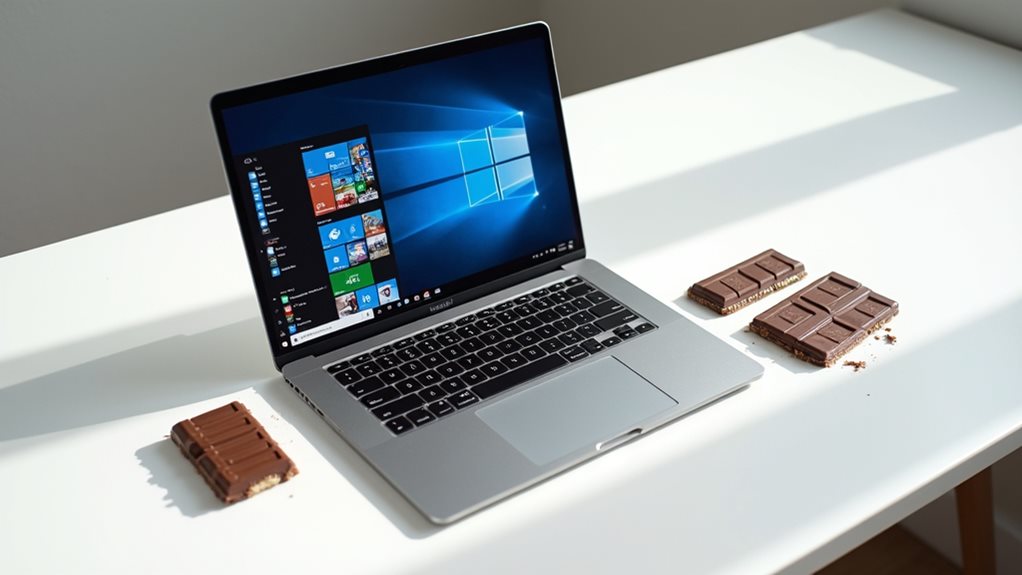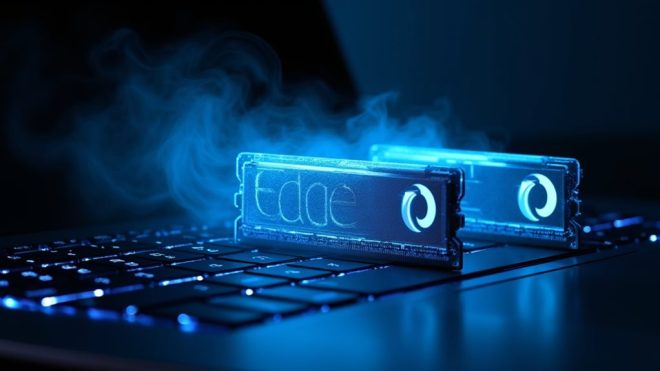Why Is Microsoft Edge So Thirsty for RAM—and How Can You Conquer It? Microsoft Edge performs admirably with RAM compared to Chrome, using 870 MB versus Chrome’s 950 MB for ten tabs. Yet, it can still suffer from occasional memory spikes. Factors like multiple tabs, heavy extensions, and corrupted data fuel these surges. Regularly clearing cache or toggling hardware acceleration can help. Curious about more savvy tips to fine-tune your browsing experience? Keep exploring.

In an environment where browsers compete for efficiency, Microsoft Edge stands out by consuming considerably less RAM than its rival Chrome, a difference of nearly 80 MB with just ten tabs open. This isn’t merely a minor detail; it signifies a significant shift in how users experience web browsing, especially in an age where resource management is paramount.
To be precise, Edge operates on about 870 MB of RAM compared to Chrome’s hefty 950 MB at the ten-tab mark. That’s right; with Edge, users are already winning the RAM war before they’ve even finished their morning coffee.
Edge consumes just 870 MB of RAM with ten tabs, clinching the RAM victory against Chrome’s 950 MB even before breakfast.
But the advantages don’t stop there. As tab counts increase, Edge maintains its superiority — pardon the pun — with 2.9 GB RAM usage at 60 tabs, whereas Chrome lingers at 3.7 GB. These figures shout efficiency, especially for multitaskers who juggle more than a few tabs like circus performers.
Interestingly, perceptions about Edge’s memory-hogging nature haven’t always been so rosy. Legacy versions struggled with RAM management, sparking doubts among users. Nevertheless, the introduction of features like Sleeping Tabs and Efficiency Mode has contributed to Edge’s admirable scalability and resource efficiency, showcasing its effective tab management capabilities. Additionally, memory consumption per process is managed effectively, resulting in a commit size that typically does not exceed 400 MB for the main browser process.
Sure, the number of tabs open does influence RAM usage, but one must consider the content within those tabs. A media-rich page can feel like a heavyweight champion, while a text-heavy one is more of a featherweight.
Those heavy extensions we love to use? They’re like surprise party crashers, often driving memory consumption through the roof, especially when combined with high-resolution displays that transform browsing into a visual extravaganza.
Yet there’s a light at the end of the tunnel—troubleshooting RAM issues in Edge isn’t a lost cause. Clearing cache and cookies can often remedy memory spikes from corrupted data, much like a good spring clean can refresh a cobweb-laden room.
Moreover, toggling hardware acceleration can potentially streamline performance, making memory woes a thing of the past.
However, users have been vocal about their experiences. Reports of RAM usage ballooning to 5-10 GB with 30 open tabs are not uncommon, even overshadowing the available system memory.
High memory alerts feel more like unwanted guests than helpful warnings, leading to confusion about actual resource usage.
The takeaway here is clear. Microsoft Edge, with its revamped efficiency and built-in controls, offers a promising alternative to RAM-hungry browsers like Chrome, creating a more pleasant browsing experience.
As the battle for browser supremacy continues, users are right to expect better management of their resources. They might just find their digital productivity flourishing, thanks to savvy choices and thoughtful technologies guiding them forward.
Final Thoughts
Memory Munchausen: Tackling Edge’s RAM Habits
Microsoft Edge’s significant RAM consumption can be a challenge for users. While Microsoft is working on enhancing its efficiency, Home Computer Technician can help you optimize your settings and extensions to regain control of your system resources. By understanding Edge’s memory management, you can implement effective strategies for a smoother browsing experience. Don’t let your browser consume more than it should—reach out to us for assistance! Click on our contact us page to connect with our team and start reclaiming your system’s performance today.

